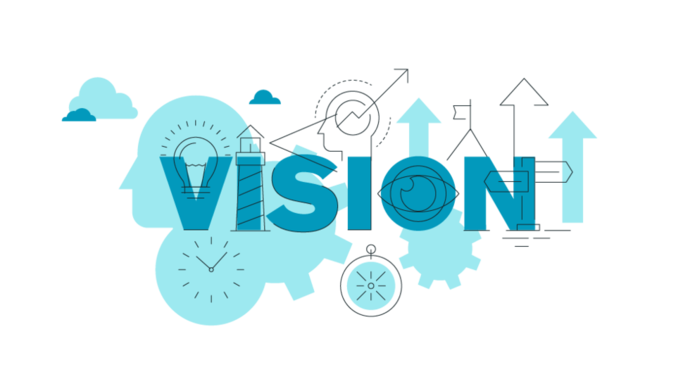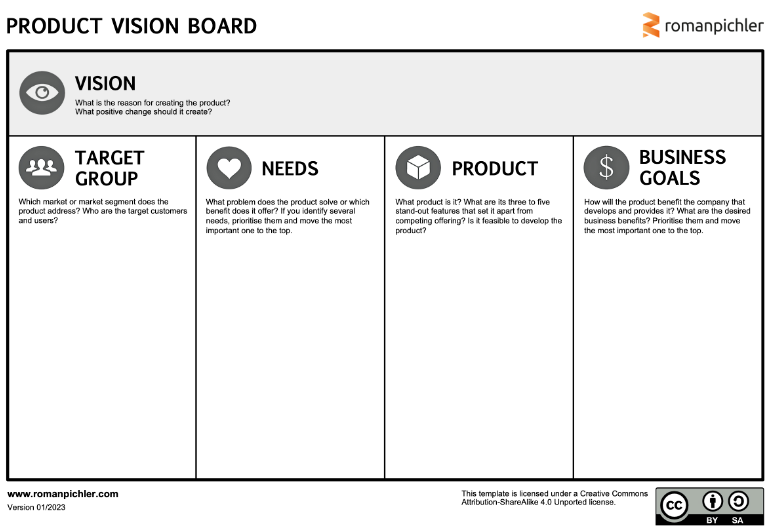
Mastering Product Envisioning in Agile Teams
Product envisioning is a crucial part of any product's success, and effective communication is one of the keys to achieving it!
This post delves into the most efficient methods to tackle Product Envisioning and reveals vital best practices that can be adopted during various phases of your learning journey. By adhering to these fundamental techniques, you can develop the competence and awareness necessary to execute effective team strategies. Nonetheless, it's crucial to recognize that Product Envisioning is only a fragment of the broader context. To gain deeper insights and assess your team’s agility, consider taking our Team Agility Advanced Assessment at Lean Agile Intelligence.
Envisioning and The Criteria Method
At Lean Agile Intelligence, we recognize Product Envisioning as a critical value that assesses the ability to envision success and effectively communicate it. We use four primary measurement criteria to assess your ability to promote team accountability and identify areas for improvement. In the following sections, we will discuss each criterion in detail and provide practical tips and techniques to help you strengthen your skills in this area.

Source - 8 Tips For Creating a Compelling Product Vision
Developing
Teams who are “developing” an understanding of the value of Product Envisioning and adopting the foundational techniques should focus on the following improvements
-
The What: One Product Vision exists explaining the desired end state for 2-5 years out
- The How: Product development starts with a vision for the future. Steve Jobs once said “If you are working on something exciting that you really care about, you don’t have to be pushed. The vision pulls you.” Therefore, a compelling and inspiring vision is essential for teams to work toward. In this post, Roman Pichler outlines 8 tips for creating a compelling product vision. Two great tools for getting started to craft a vision with a team or product goals are by Roman Pichler. They can be found here and here.
- The How: Product development starts with a vision for the future. Steve Jobs once said “If you are working on something exciting that you really care about, you don’t have to be pushed. The vision pulls you.” Therefore, a compelling and inspiring vision is essential for teams to work toward. In this post, Roman Pichler outlines 8 tips for creating a compelling product vision. Two great tools for getting started to craft a vision with a team or product goals are by Roman Pichler. They can be found here and here.
-
The What: The Product Vision gives the team a shared understanding of what they are trying to accomplish
-
The How: Extended from a vision are product goals that can be created for business objectives, customer problems, and market trends. These goals should be created together to build alignment and shared understanding among all team members involved. A common industry practice is to use Objective and Key results to drive execution towards a vision. You can read more about that here.
-
Emerging
Teams that are “emerging” beyond the foundational techniques of Product Envisioning and are embracing it as they become more proficient should focus on the following improvements.
-
The What: The Product Vision is short and concise.
- The How: Geoffry Moore offers a simple template for drafting a short and concise vision statement, based on a fill-in-the-blank approach.
- For [our target customer]
- Who [customer’s need]
- The [product] is a [Product category or description]
- That [unique benefits and selling points].
- Unlike [competitors or current methods], our product [main differentiators].
- The How: Geoffry Moore offers a simple template for drafting a short and concise vision statement, based on a fill-in-the-blank approach.
-
The What: The Product Vision is inspiring, compelling, empowering, and focuses on the customer
- The How: Geoffry Moore offers a simple template for drafting a short and concise vision statement, based on a fill-in-the-blank approach.
- For [our target customer]
- Who [customer’s need]
- The [product] is a [Product category or description]
- That [unique benefits and selling points].
- Unlike [competitors or current methods], our product [main differentiators].
- The How: Geoffry Moore offers a simple template for drafting a short and concise vision statement, based on a fill-in-the-blank approach.
Adapting
Teams “adapting” the Product Envisioning practice to extract the full benefit should focus on the following improvements.
-
The What: There is a clear connection point between the Product Vision and higher-level business strategy and objectives
- The How: It’s not enough to create OKRs, but for them to be valuable, everyone involved in executing the OKRs needs to understand how their daily work aligns with OKRs. One tip for accomplishing this is to tie the success criteria of features and stories back up to the OKRs and regularly review OKR performance with everyone involved.
-
The How: One technique we recommend is “Discovery Kanban,” which officially pulls design and research into an agile process. It contains “Problem understanding” and “Solution Discovery.” In the Problem Understanding phase, we gather data to help us understand and frame the problem. Data includes both qualitative and quantitative data, such as customer interviews, surveys, support tickets, sales call feedback, product usage, and NPS feedback. That data becomes general company knowledge, such as our user personas, or feeds directly into the Solution Exploration phase.
In Solution Exploration, designers use the data gathered during Problem Understanding to frame the problem to be solved. Designers explicitly write down the problem, use cases, target users, and anything that’s out of scope. After getting buy-in from the PM and team, they explore solutions by creating sketches, wireframes, and prototypes. Engineers are looped in to provide feedback on technical feasibility. Researchers do usability testing in this phase as well. Finally, the output is finished designs that are fully thought through. This means there are no open questions about what a feature does that would slow down an engineer during development. More info can be found in the blog post by Optimizely here.

Optimizing
Teams “optimizing” the knowledge sharing of the Product Envisioning practice learnings across the enterprise should focus on the following improvements.
-
The What: Team members can recite the Product Vision
-
The How: By team members being involved in defining the product vision, using visual aids, regularly communicating and reinforcing the vision, and providing training and education, Agile teams can ensure that they can effectively recite the product vision and align their work towards the shared vision. Here are examples of ways teams can ensure that team members can recite the product vision:
-
Product Vision Workshops: Product Owners with Agile Teams can conduct product vision workshops to define and articulate the product vision collaboratively. These workshops can involve team members from different roles, such as product owners, developers, designers, and other stakeholders, to discuss, brainstorm, and craft the product vision collectively. Product Owners can use brainstorming, story mapping, or visual modeling techniques to create a shared understanding of the product vision and ensure that team members are actively involved in the process. This helps team members internalize and understand the product vision, making it easier to recite and communicate it effectively.
-
Vision Statements: Product Owners with Agile Teams can create concise and memorable vision statements that capture the essence of the product vision. Vision statements should be simple, clear, and inspirational and convey the product's purpose, value, and direction memorably. For example, a vision statement for a project management software could be "Empowering teams to collaborate and deliver with ease," which conveys the purpose and value of the product succinctly and memorably. Agile teams can use vision statements in team meetings, daily stand-ups, and other team interactions to reinforce the product vision and ensure that team members can recite it.
-
Visual Aids: Product Owners and Agile teams can use visual aids, such as posters, infographics, or visual models, to represent the product vision visually and tangibly. These visual aids can be displayed in team workspaces, meeting rooms, or other common areas to remind the product vision constantly. Visual aids can include key concepts, keywords, or diagrams representing the product vision, making it easier for team members to recall and recite the vision. For example, a visual model such as a "Product Vision Canvas" or a "Product Vision Board" can help Agile teams capture and visualize the key elements of the product vision, making it easier for team members to remember and articulate it.
-
-
* * * * * *
"Try sharing your teams’ improvements and success at communities of practice and internal blog posts within your company so other teams can learn from your experience."
* * * * * *
Conclusion
The journey of Agile Envisioning and Ideation is a critical path in the creation of successful products. It requires a blend of vision, communication, and collaborative effort to align a product with user needs and business objectives. Throughout the stages of Developing, Emerging, Adapting, and Optimizing, teams learn to refine their envisioning techniques, from crafting compelling product visions to integrating these visions seamlessly with larger business strategies. This evolution of skills not only empowers teams to create products that resonate with users but also strengthens their ability to adapt and thrive in competitive markets. Effective product envisioning, therefore, is not just about generating innovative ideas; it's about fostering a culture where these ideas are continuously aligned with strategic goals, user insights, and market trends. By committing to these practices, teams can ensure that their products are not only technically feasible but also deeply connected to the value they aim to provide to their customers. To evaluate your team’s current practices and uncover strategies for improvement, take our Team Agility Advanced Assessment at Lean Agile Intelligence and empower your team to reach new heights in agility.